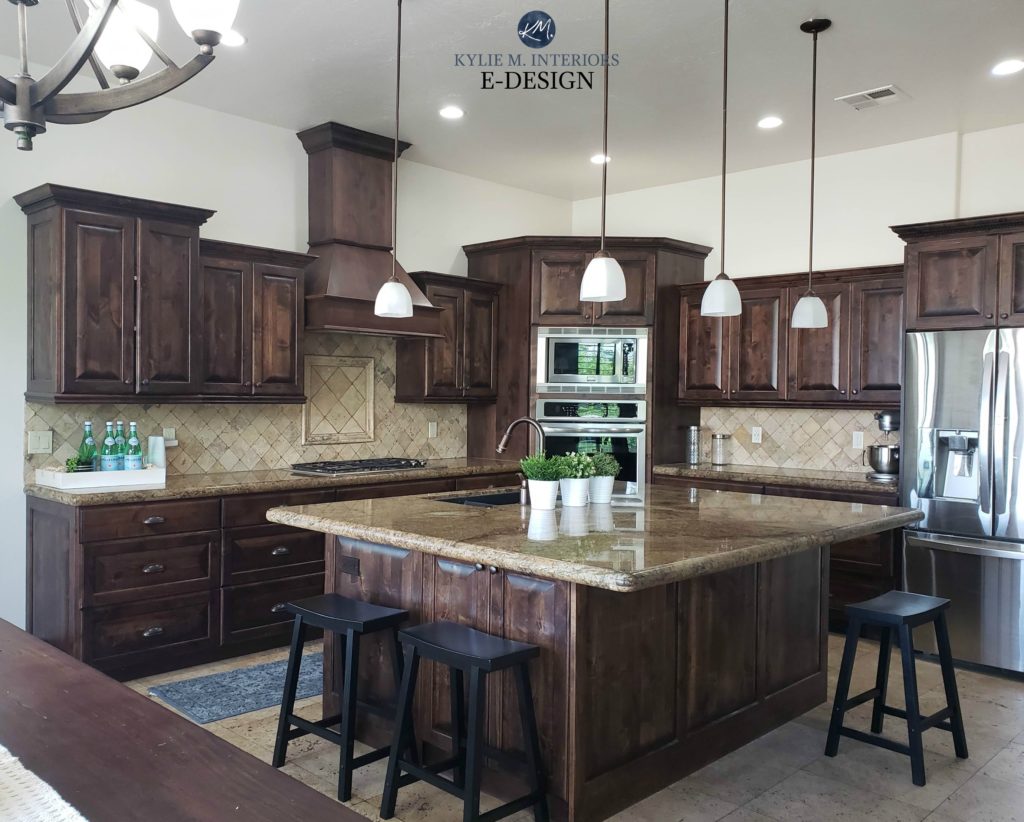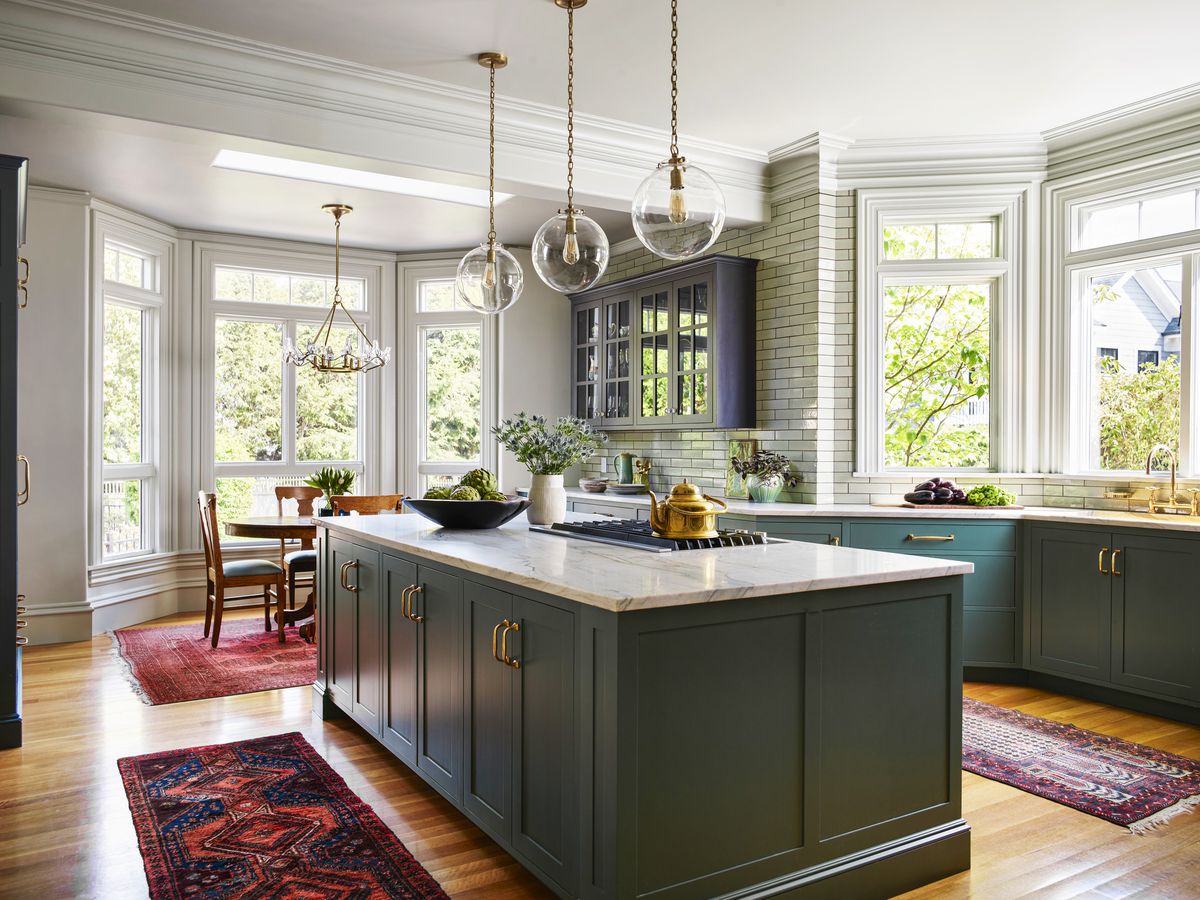Preparing Your Cabinets

You’ve decided to transform your kitchen with a dark paint job for your cabinets. It’s a great way to give your kitchen a modern and sophisticated look. But before you grab your paintbrush, you need to properly prepare your cabinets for painting. This will ensure that your paint adheres well, lasts longer, and looks its best.
Cleaning and Prepping Your Cabinets
Clean and prep your cabinets thoroughly before painting. This ensures the paint adheres properly and lasts longer. Here’s a step-by-step guide:
- Remove all hardware: This includes cabinet doors, drawer fronts, knobs, hinges, and pulls. You can label each piece with masking tape and a number to make reassembly easier.
- Clean your cabinets: Use a mild dish soap and warm water to remove grease, grime, and any sticky residue. Use a soft cloth or sponge to avoid scratching the surface. Rinse well and dry completely.
- Degrease the surfaces: After cleaning, use a degreaser to remove any remaining oils or residue. This will ensure a smooth paint finish. Apply the degreaser with a clean cloth and allow it to dry completely.
- Fill any holes or imperfections: Use wood filler to fill any holes or imperfections in the cabinet surfaces. Apply the filler with a putty knife, ensuring it’s level with the surface. Allow the filler to dry completely before sanding.
Removing Existing Hardware, How to paint kitchen cabinets dark
Before you can start cleaning and prepping, you’ll need to remove all the hardware from your cabinets. This includes cabinet doors, drawer fronts, knobs, hinges, and pulls.
- Start by removing the hinges from the cabinet doors. You’ll likely need a screwdriver for this step. Be careful not to damage the surrounding wood.
- Next, remove the knobs or pulls from the cabinet doors and drawers. Use a screwdriver or wrench, depending on the type of hardware.
- Once all the hardware is removed, set it aside in a safe place. You’ll need to reattach it after you’ve finished painting.
Sanding Your Cabinets
Sanding is crucial for a smooth and even paint finish. It helps create a surface that the paint can adhere to better.
- Start with a coarse-grit sandpaper (80-120 grit) to remove any rough spots or imperfections.
- Then, use a medium-grit sandpaper (120-180 grit) to smooth out the surface.
- Finally, use a fine-grit sandpaper (220-400 grit) to create a smooth, even finish. This will help the paint glide on smoothly and prevent brush strokes from showing.
Sandpaper Types and Uses
Here’s a table comparing different types of sandpaper and their uses in cabinet preparation:
| Sandpaper Type | Grit | Uses |
|---|---|---|
| Coarse | 80-120 | Removing rough spots, imperfections, and old paint layers |
| Medium | 120-180 | Smoothing out surfaces and removing minor imperfections |
| Fine | 220-400 | Creating a smooth, even finish for painting |
Choosing the Right Paint: How To Paint Kitchen Cabinets Dark

Picking the right paint for your kitchen cabinets is crucial for achieving a durable, long-lasting finish that enhances the look of your kitchen. You’ll want to consider the type of paint, the sheen, and whether a primer is necessary.
Types of Paint
The type of paint you choose will impact the finish, durability, and ease of application.
- Oil-based paint is known for its durability, excellent adhesion, and ability to withstand moisture and heat. It’s a good choice for high-traffic areas like kitchens, especially if you want a high-gloss finish. However, oil-based paint takes longer to dry and can be difficult to clean up, requiring mineral spirits.
- Latex paint is water-based, making it easier to clean up and dries faster than oil-based paint. Latex is a good choice for kitchen cabinets because it’s less likely to yellow over time and is also more eco-friendly. While it’s not as durable as oil-based paint, latex paint can still be a good choice for kitchen cabinets, especially when using a high-quality brand and applying multiple coats.
- Chalk paint is a popular choice for achieving a vintage or farmhouse look. It adheres well to various surfaces, including wood, metal, and even glass. Chalk paint is typically water-based and dries quickly, making it a user-friendly option. However, chalk paint is not as durable as oil-based or latex paint and may require a sealant to protect the finish.
Paint Sheen
The sheen of your paint will determine how much light it reflects and its overall appearance.
- Flat sheen offers a matte finish that hides imperfections well but can be difficult to clean. It’s not ideal for kitchen cabinets because they are prone to grease and grime.
- Eggshell provides a soft, velvety finish that is easy to clean and offers a good balance between durability and hiding imperfections.
- Satin is a slightly glossier finish that is durable and easy to clean, making it a popular choice for kitchen cabinets.
- Semi-gloss offers a more reflective finish that is very durable and easy to clean. It’s a good choice for high-traffic areas and cabinets that are prone to spills.
- Gloss provides the highest level of shine and durability but can highlight imperfections. It’s often used for trim work and doors but may be too reflective for kitchen cabinets.
Primer
Using a primer specifically designed for dark paint colors is essential, especially when painting over light-colored cabinets. A primer helps the paint adhere properly, prevents the original color from showing through, and creates a smooth, even surface for the top coat.
- Primer for Dark Colors: Primers designed for dark colors have pigments that help to block out the original color and create a more consistent dark finish. They also help to prevent the paint from looking uneven or streaky.
Recommended Paint Brands
There are many high-quality paint brands available, each with its own unique features and benefits.
- Benjamin Moore is known for its high-quality, durable paints and offers a wide range of colors and finishes. Their Advance Interior Acrylic Latex paint is a popular choice for kitchen cabinets.
- Sherwin-Williams offers a variety of paint options, including their Emerald Interior Acrylic Latex paint, which is known for its durability and ease of application.
- Valspar is a budget-friendly option that offers good quality paint for a reasonable price. Their Reserve Interior Acrylic Latex paint is a popular choice for kitchen cabinets.
Painting Your Cabinets

Now that you’ve prepped your cabinets and chosen the right paint, it’s time to get down to the business of painting. This is the most rewarding part of the process, as you’ll start to see your kitchen transform before your eyes.
Applying Primer and Paint
Primer is crucial for ensuring a smooth, even finish and helping your paint adhere properly. It also helps to seal in any imperfections in the wood.
* Apply a thin, even coat of primer to all surfaces of your cabinets. Use a brush for hard-to-reach areas and a roller for larger surfaces.
* Let the primer dry completely according to the manufacturer’s instructions. This is typically around 2 hours.
* Once the primer is dry, you can start applying your paint.
* Apply two to three thin coats of paint, allowing each coat to dry completely before applying the next.
Painting Techniques
There are three main methods for painting kitchen cabinets: using a brush, a roller, or a spray gun. Each method has its own advantages and disadvantages.
Using a Brush
Brushes are great for achieving a smooth finish on detailed areas, such as cabinet doors and drawer fronts.
* Choose a high-quality brush with soft bristles that are appropriate for the type of paint you’re using.
* Dip the brush into the paint, but don’t overload it.
* Apply the paint in thin, even strokes, working in the direction of the wood grain.
* For best results, use a brush that’s specifically designed for painting cabinets.
Using a Roller
Rollers are ideal for covering large, flat surfaces quickly and efficiently.
* Choose a roller with a nap length that’s appropriate for the type of paint you’re using. A short nap is best for smooth surfaces, while a longer nap is better for textured surfaces.
* Load the roller with paint, but don’t overload it.
* Roll the paint onto the cabinet surfaces in smooth, even strokes, working in a W pattern.
* Overlap each stroke by about 50%.
Using a Spray Gun
Spray guns provide a fast and even finish, but they require some practice and skill to use effectively.
* Choose a spray gun that’s designed for the type of paint you’re using.
* Thin the paint according to the manufacturer’s instructions.
* Practice spraying on a piece of scrap wood before applying paint to your cabinets.
* Hold the spray gun about 6-8 inches away from the surface and move it smoothly and evenly.
Achieving a Smooth and Even Finish
To ensure a professional-looking finish, it’s important to pay attention to drying times and layering techniques.
* Allow each coat of primer and paint to dry completely before applying the next. This will help to prevent the paint from becoming cloudy or uneven.
* Apply thin, even coats of paint. Thick coats can cause drips and runs.
* Use a high-quality paint that’s specifically designed for cabinets. This will help to ensure a durable and long-lasting finish.
* Use a light sanding block between coats to smooth out any imperfections.
Avoiding Common Mistakes
Here are some tips to avoid common painting mistakes:
* Avoid drips and runs: Apply thin, even coats of paint and let each coat dry completely before applying the next.
* Prevent brushstrokes: Use a high-quality brush and apply the paint in thin, even strokes.
* Avoid dust and debris: Keep your work area clean and dust-free.
* Clean your tools: Clean your brushes, rollers, and spray gun thoroughly after each use.
Tools and Materials
| Method | Tools and Materials |
|—|—|
| Brush | Paintbrush, paint tray, paint thinner, drop cloth |
| Roller | Paint roller, roller tray, paint thinner, drop cloth |
| Spray Gun | Spray gun, compressor, paint thinner, respirator mask, safety glasses, drop cloth |
How to paint kitchen cabinets dark – Painting kitchen cabinets dark can be a dramatic transformation, adding depth and sophistication to your space. If you’re looking for inspiration, check out blue bedroom ideas pinterest for color schemes that can translate beautifully to your kitchen. Just remember, dark colors can make a room feel smaller, so be sure to balance them with lighter accents and plenty of natural light.
You’ll be amazed at how a fresh coat of paint can completely change the look and feel of your kitchen!
Painting your kitchen cabinets dark is a fantastic way to create a dramatic and sophisticated look! You can go for a rich, deep navy, a moody charcoal, or even a bold black. If you’re looking for inspiration, check out the stunning combination of dark wood and white kitchen cabinets , which creates a timeless and elegant contrast.
No matter what shade you choose, remember to prep your cabinets properly before painting for a flawless finish that will stand the test of time.